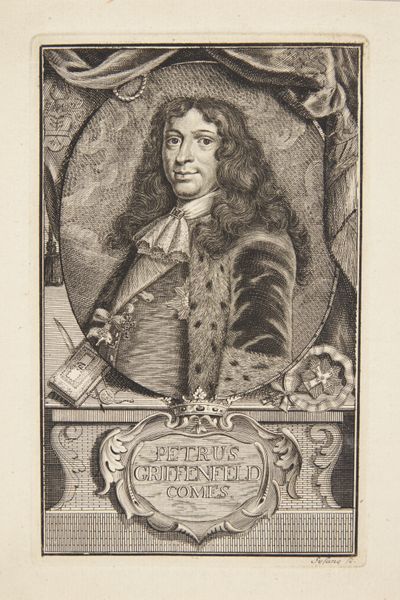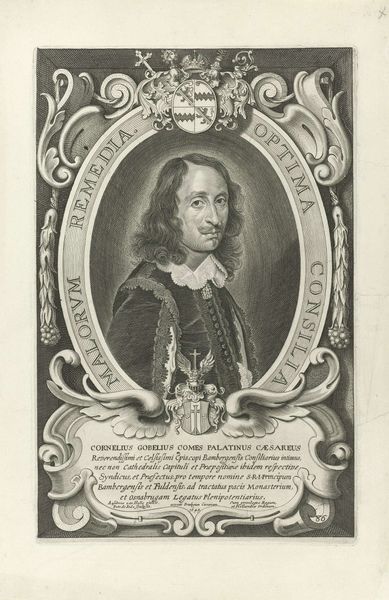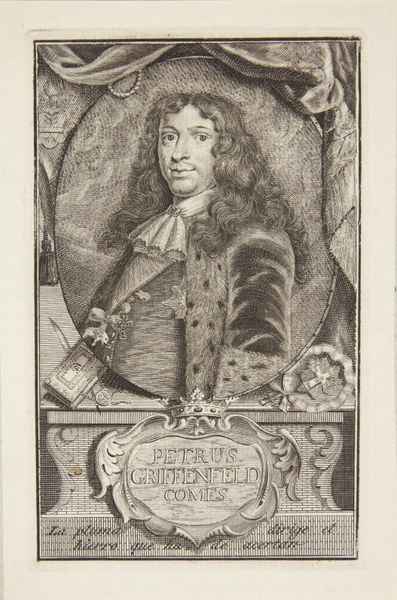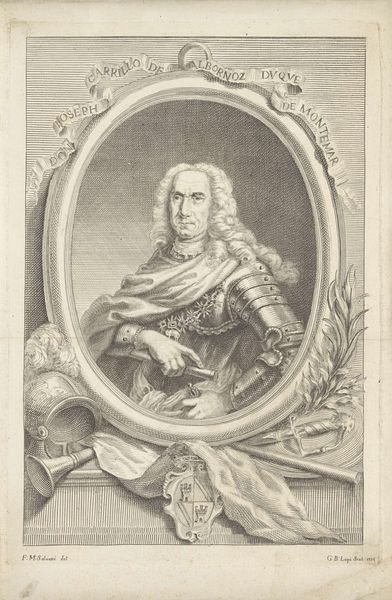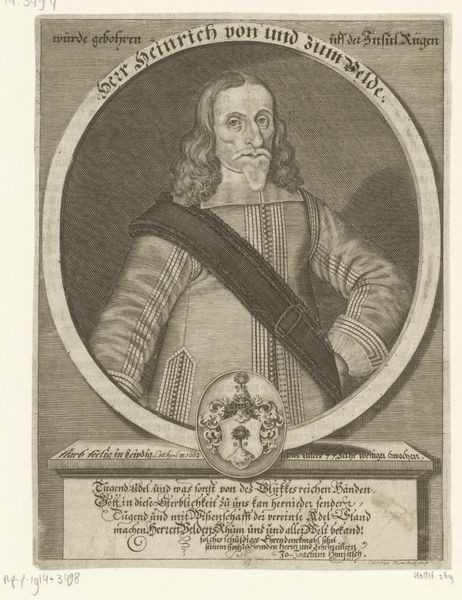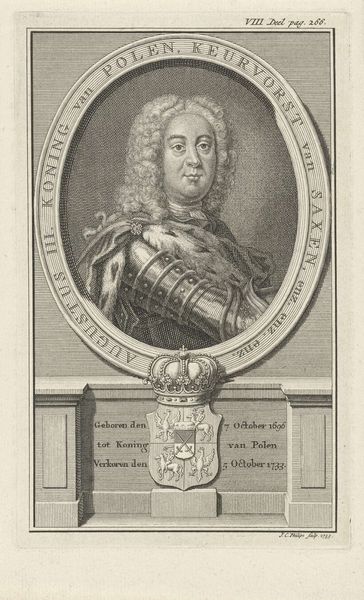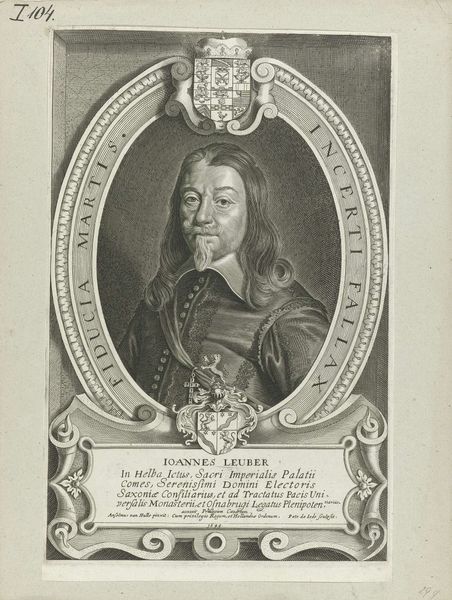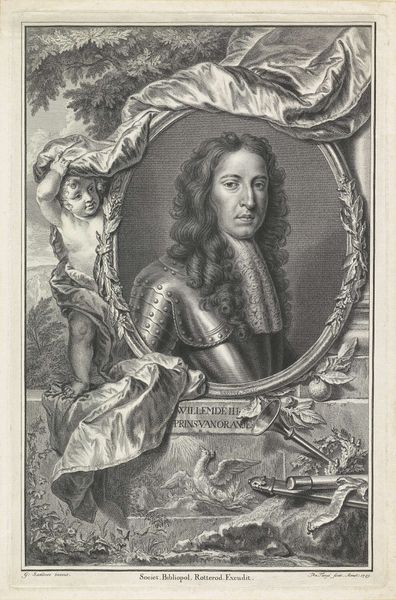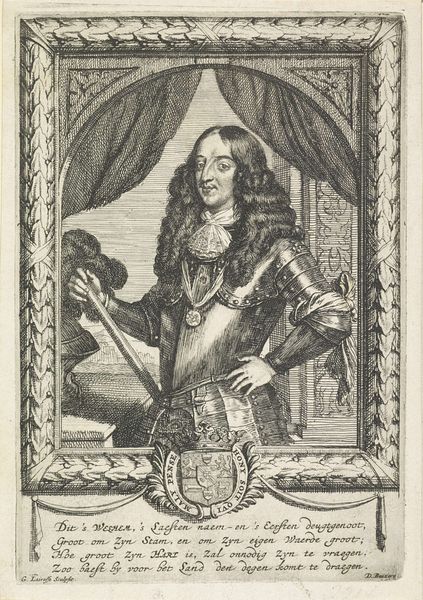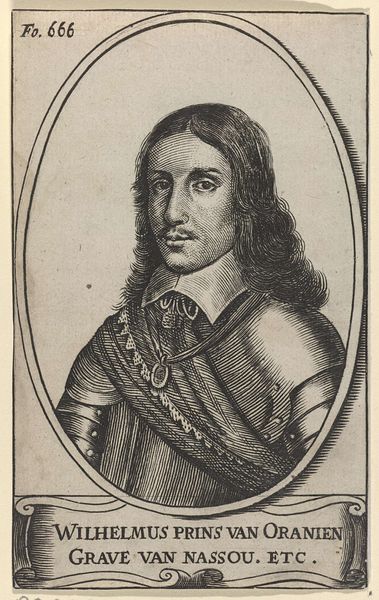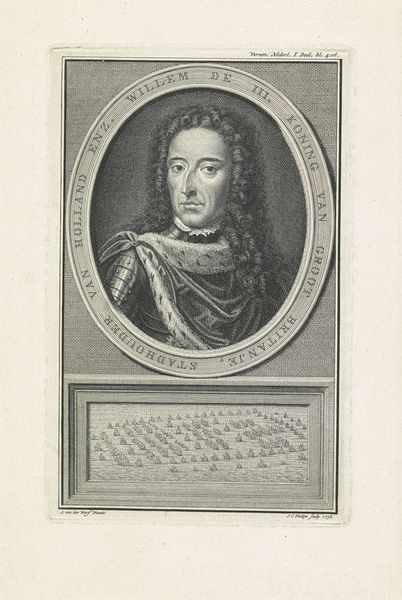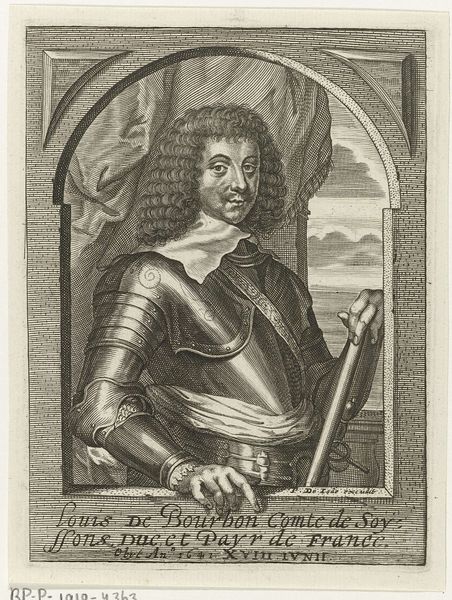
print, engraving
#
portrait
#
baroque
# print
#
old engraving style
#
history-painting
#
engraving
Dimensions: height 141 mm, width 83 mm
Copyright: Rijks Museum: Open Domain
Curator: Before us is a Baroque print created in 1737 by Jan Caspar Philips, entitled "Portret van Eugenius van Savoye." It resides here at the Rijksmuseum. Editor: My initial reaction? Imposing, yet intricately detailed. There's a central oval portrait that commands attention, but all the details compete with it. The shading creates an overall somber, classical mood. Curator: The portrait commemorates Prince Eugene of Savoy, a celebrated military commander. Philips' choice of the print medium reflects the period’s accessibility to portraiture, creating an opportunity to widely disseminate images of important leaders. Prints such as this helped shape his public image. Editor: I’m drawn to the figure at the base of the oval. It’s some sort of wildman or perhaps an Atlas figure who's using both arms to hold the inscribed plinth that bears the prince's title. It looks like he is resting one hip upon a mortar as cannons rest to his right. Is he meant to symbolize the burdens of leadership, of war? Curator: Indeed! He almost certainly represents strength and steadfastness supporting the Prince’s achievements. In iconographic terms, the armor reinforces the military prowess and nobility of the sitter. The trophies emerging around the frame do likewise. Editor: Those trophies give the composition a sense of completeness while adding layers of meaning for an educated viewer. There's so much encoded meaning about duty and leadership; a heroic classical age now fading with time, even back then when new powers started taking charge! Curator: I would agree, but emphasize how crucial those representations of leadership were to maintaining the legitimacy of rulers and military leaders at the time. Editor: Seeing it this way—this detailed piece becomes more than just a portrait, but rather a meticulously crafted emblem of power and its foundations. Curator: Precisely, and recognizing that context deepens our understanding of its historical purpose. Editor: And exploring its iconography helps unlock a whole story of visual messaging about the importance of duty, status and enduring legacy that the artist carefully built into the final composition.
Comments
No comments
Be the first to comment and join the conversation on the ultimate creative platform.
